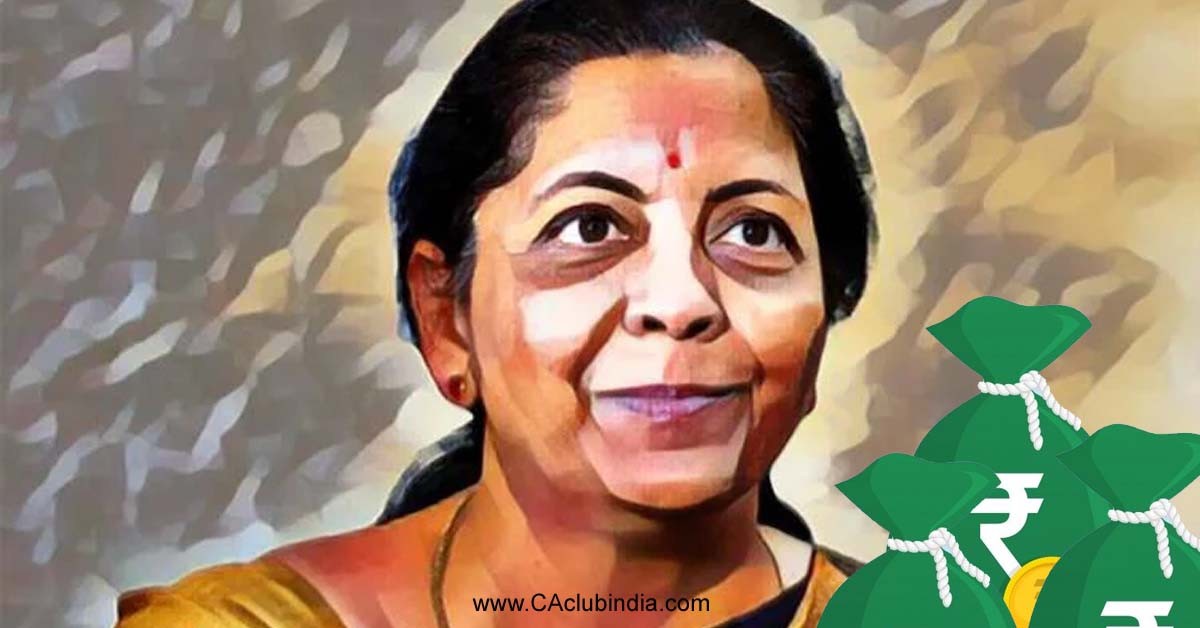In the July 2024 Budget, Finance Minister Nirmala Sitharaman aimed to provide relief to India's middle and lower-income households by widening the income tax slab for zero tax and increasing the standard deduction for salaried individuals. This was designed to boost disposable income, stimulate consumer spending, and fuel economic growth. However, nearly six months later, the situation remains grim, with many households still struggling to meet their daily expenses, even for essentials.
One of the biggest revelations in recent months has come from Godrej Consumer Products, a key player in India’s fast-moving consumer goods (FMCG) sector. The company has reported significant slowdowns in consumer spending, highlighting persistent financial stress among middle and lower-income families. This growing concern underscores the need for the government to revisit its fiscal policies in the upcoming Budget for 2025, to address the evolving economic pressures.

Key Budget Announcements and Their Impact
The July 2024 Budget was seen as a crucial turning point for India's middle class. One of its most notable provisions was the increase in the standard deduction for salaried employees to ₹75,000, alongside a significant reduction in income tax liabilities for individuals earning less than ₹3 lakh annually. The intention was clear: to put more money in the hands of the common man and encourage consumption, which in turn could boost the economy.
However, despite these measures, the surge in food prices over the past few months has forced consumers to cut back on essential items. According to recent data, even basic necessities are no longer immune to rising costs, with food prices soaring across the country. The persistent inflationary pressure is creating a dilemma for the Finance Minister: Will more tax breaks be required, or should the government focus on controlling inflation to ease the burden on households?
The Stress on Household Budgets
A closer look at India’s economic indicators reveals that many lower-income households are feeling the squeeze. With slowing income growth and rising prices, the financial resilience of India’s middle and lower-income families is weakening. This has been reflected in the country's modest 5.4% GDP growth for the quarter ending September 2024, marking a sharp contrast to the earlier optimism seen in 2023.
According to the latest survey by the Reserve Bank of India (RBI), inflationary pressures are expected to persist in the coming months, especially in food and housing-related expenses. As a result, a larger share of respondents in a recent RBI survey anticipates an increase in prices over the next year, indicating that inflation is far from being under control.
In December 2024, shares of Godrej Consumer dropped by nearly 10% after the company warned of a sluggish quarter ahead, citing reduced demand for soaps and detergents. The FMCG giant’s outlook mirrors the challenges faced by many other businesses that rely on mass consumption. Despite India’s status as the world’s fastest-growing major economy, much of the growth has been driven by government expenditure and demand for luxury goods. Unfortunately, the benefits of this growth have yet to reach the average consumer.
The Role of Infrastructure Spending
The government has long bet on infrastructure development—roads, highways, metro rail, and more—to drive economic growth and job creation. The theory is that the growing infrastructure sector would create more jobs, increase incomes, and ultimately benefit the middle class and poor. However, recent trends suggest that the desired "trickle-down" effects have fallen short.
A report from consumer research firm Kantar in October 2024 revealed that urban demand has been on the decline for at least five consecutive quarters, indicating that even in the cities, the financial strain is increasingly visible. Despite record budget allocations for infrastructure, consumer demand continues to stagnate, raising questions about the effectiveness of the government's fiscal policies in addressing the immediate needs of India’s working class.
Challenges for the Informal Sector
One of the key challenges in addressing the economic difficulties of lower-income households is the large informal workforce in India. According to a SBI Research report from June 2024, approximately 45% of the Indian workforce is employed in informal sectors, with no access to formal financial systems, social security, or benefits. The government's e-shram portal, which aims to provide social security benefits to unorganised workers, has registered over 304 million people, but this vast workforce remains largely excluded from the benefits of tax cuts and formal wage increases.
For many in this sector, rising inflation is more than just a number—it directly impacts their day-to-day survival. With limited access to social welfare, the informal sector’s struggle could be one of the most pressing challenges for the Finance Minister as she prepares for the February 2025 Budget.
The Road Ahead: What Can Budget 2025 Deliver?
The upcoming 2025 Budget will need to balance the priorities of boosting growth while managing inflation. Finance Minister Sitharaman faces the unenviable task of addressing a slowing economy and a dissatisfied middle class. Key questions loom: Should she offer more targeted tax relief to the middle class, or should she focus on taming inflation to help ease the burden of rising costs?
Consumer demand is crucial for India’s economic recovery, as household spending contributes significantly to the country’s GDP. With the current outlook of continued inflation and subdued demand, it is clear that immediate intervention is required to support the nation’s economic recovery. Whether this intervention comes in the form of tax breaks, subsidies, or inflation control measures will be the central theme of Budget 2025.
As India navigates this complex economic landscape, all eyes will be on the Finance Minister’s next move. The middle class, in particular, is hoping for a solution that offers immediate relief while ensuring long-term financial stability for all.







 CAclubindia
CAclubindia

